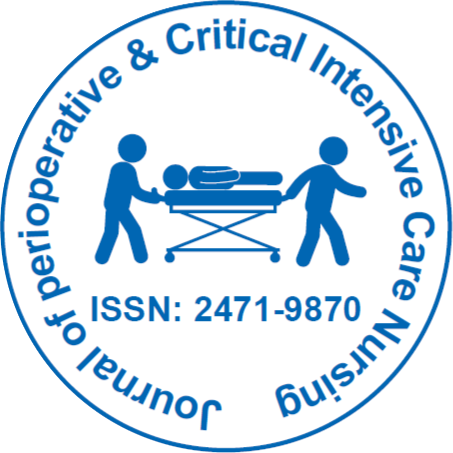
Journal of Perioperative & Critical Intensive Care Nursing
Open Access
ISSN: 2471-9870
+44-77-2385-9429

ISSN: 2471-9870
+44-77-2385-9429
Perspective - (2022)Volume 8, Issue 3
Frailty is a condition defined by a susceptibility to stresses brought on by an accumulation of deficiencies. Chronic systemic inflammation and disruption of the neuroendocrine system are two basic mechanisms that contribute to frailty. Frailty is linked to more frequent lung disease flare-ups in persons with chronic lung disease. As early as the 1940s, geriatricians began to identify subgroups of older people whose functional limitations and agerelated comorbid diseases appeared to be greater than what chronologic age alone might predict. Researchers like Linda Fried and Kenneth Rockwood didn't recognize these behaviors as a distinct condition they named "frailty" until the early twentyfirst century. The most widely recognized definition of fragility today is an accumulation of physiologic deficits across several interrelated systems that lead to both immediate functional limitations and increased vulnerability to stress. Frailty is a "state of risk" in which the body's physiologic reserves are exhausted, causing a disproportionate (and potentially catastrophic) decline in health from a relatively little stressor that would have been unimportant otherwise. In the field of geriatrics, frailty is linked to the most serious consequences for older people: the loss of the physical and cognitive abilities needed to maintain an independent lifestyle. Frailty is associated with a variety of cognitive and physical impairments, a higher risk of falls, hospitalization, institutionalization, a worse quality of life in terms of one's health, and death. According to pulmonary medicine, patients with lung disease who are frail may be more prone to experiencing pulmonary exacerbations, which increase the risk of mortality and function loss. In critical care medicine, weak patients who develop acute critical illnesses are more likely to pass away before being discharged or need prolonged or permanent institutionalization. Recent research has linked frailty to poor outcomes in persons with severe illnesses including lung disease, including children. People with lung illness frequently experience hunger, weakness, and muscle wasting. The improvement in exercise capacity, disability, and quality of life following pulmonary rehabilitation may be partially attributed to the treatment of these frailty components. Such measures may lessen wait-list delisting or mortality for lung transplant candidates. Prior attempts to address undernutrition-related frailty impairments and endocrine dysfunction during life-threatening illness have failed. It is essential necessary to continue creating and evaluating innovative rehabilitation therapies for critically sick individuals. Growth hormone replacement therapy quadrupled the risk of inhospital death in medical and surgical patients who were severely sick and acutely unwell. It's likely that existing tools will need to be improved in order to measure frailty in critical illness and lung disease.
The majority of the reported connection between frailty and poor outcomes may be explained by a few particular frailty components. Imaging or biomarker evaluations might enhance the instrument's ability to forecast risk. Functional restrictions and disabilities that seem out of proportion to pulmonary impairment may be explained by frailty evaluation. After major surgery, postoperative complications and death are linked to preoperative frailty and sarcopenia.
Adults with lung illness who are getting ready for surgery should be assessed for frailty to help risk categorization. As a result of an accumulation of physiologic deficits across several interrelated systems, fragility is a generalized sensitivity to stresses. It was initially intended for older people. People with lung disease and critical illnesses frequently exhibit frailty, which is associated with low functional status, exacerbations of lung disease, disability, poor health-related quality of life, and death.
Doctors may use frailty evaluation to help them identify patients who are more likely to have negative outcomes and who could benefit from specialized treatment. To maintain functional independence, lessen impairment, and improve survival, clinical frailty evaluations must be improved, processes must be understood, and medicines targeting frailty in lung disease and critical illness must be created.
Citation: Brown S (2022) Critical Pulmonary Care for Frailty Syndrome. J Perioper Crit Intensive Care Nurs. 8:207
Received: 21-Nov-2022, Manuscript No. JPCIC-22-21581; Editor assigned: 23-Nov-2022, Pre QC No. JPCIC-22-21581 (PQ); Reviewed: 07-Dec-2022, QC No. JPCIC-22-21581; Revised: 15-Dec-2022, Manuscript No. JPCIC-22-21581 (R); Published: 22-Dec-2022 , DOI: 10.35248/2471-9870.22.8.207
Copyright: © 2022 Brown S. This is an open-access article distributed under the terms of the Creative Commons Attribution License, which permits unrestricted use, distribution, and reproduction in any medium, provided the original author and source are credited